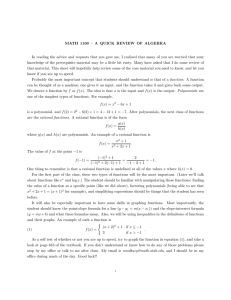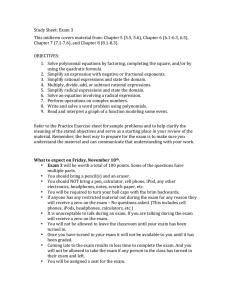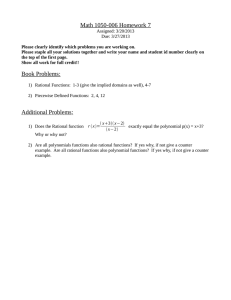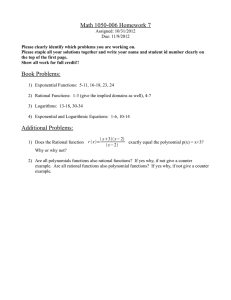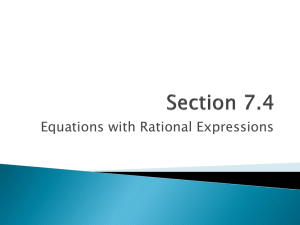Document 11908144
advertisement
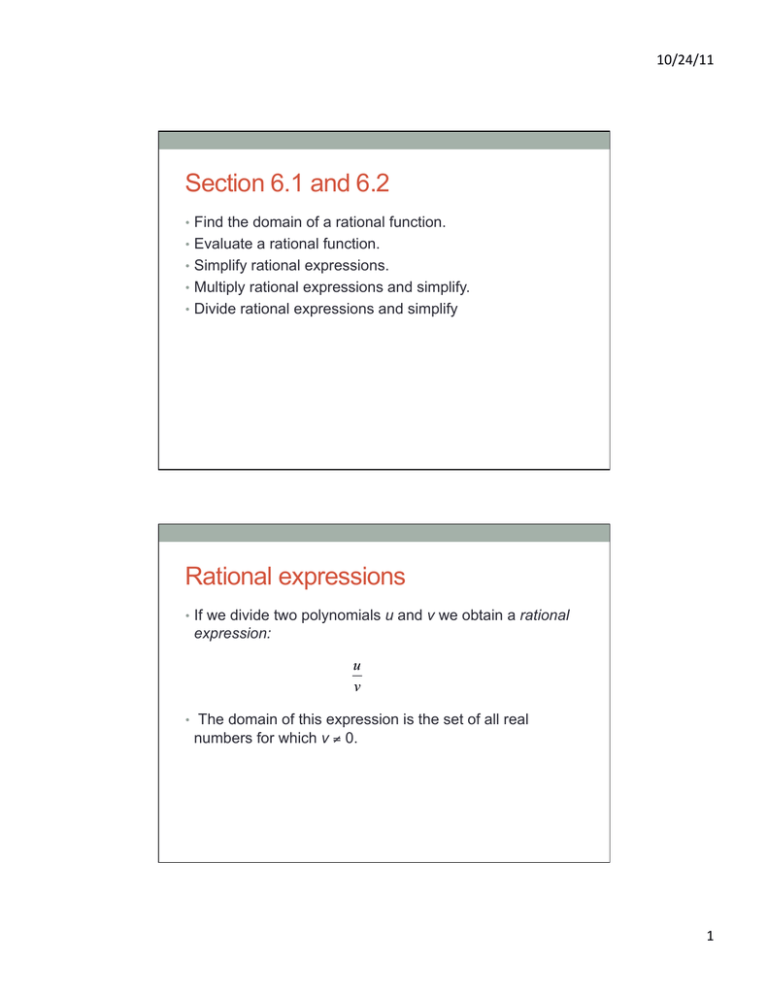
10/24/11 Section 6.1 and 6.2 • Find the domain of a rational function. • Evaluate a rational function. • Simplify rational expressions. • Multiply rational expressions and simplify. • Divide rational expressions and simplify Rational expressions • If we divide two polynomials u and v we obtain a rational expression: • The domain of this expression is the set of all real numbers for which v ≠ 0. 1 10/24/11 Rational functions • If we have two polynomial functions u(x) and v(x), the function is a rational function whose domain is the set of all real numbers where v(x) ≠ 0. Find the domains 2 10/24/11 Find the domains Evaluate 3 10/24/11 1. Yes 2. No 3. I’m not sure Simplifying the rational functions • If the numerator and denominator of a rational function (expression) have common factors we can cancel them after we record what the domain must be. 4 10/24/11 What is the domain of 1. All real numbers r 2. All real numbers r such that r≠2 and r≠3 3. All real numbers r such that r≠2 4. I have no idea u w u z uz ÷ = ⋅ = v z v w vw In order to determine the domain, we want to fine the values such that : 1. v≠0, z≠0 € 2. v≠0, w≠0 3. v≠0, z≠0, w≠0 5 10/24/11 Examples: Simplify Section 6.3. • Add rational expressions. • Subtract rational expressions 6 10/24/11 Operations on rational functions • Just like you would with fractions! 7 10/24/11 More: Add and simplify 8 10/24/11 • x 2x 2x Describe and correct the errors • 9 10/24/11 Section 6.5: Dividing polynomials • Divide polynomials by monomials and simplify. • Use long division to divide polynomials by polynomials. Dividing polynomials • Find 10 10/24/11 Dividing polynomials • Solve • Let’s do 5724÷3 first, or rather in parallel. 11 10/24/11 Dividing polynomials Dividing polynomials 12 10/24/11 Dividing polynomials 13

